Ingrid Kosar always dreamed about running her own business. She didn’t know what kind of company it would be, but she liked to picture herself carrying a little briefcase. As it turns out, a very different kind of bag would define her career. It’s a bag that appears on doorsteps millions of times a week for Friday family movie nights and college study sessions.
It’s the insulated pizza delivery bag, and Ingrid Kosar invented it.
“There is a need in certain fields for soft-sided thermally insulated carrying cases,” reads Kosar’s patent from 1984, one of three that she earned. “One particular application is the ready-to-eat pizza field, where hot pies are packaged in rectangular cardboard cartons and delivered several cartons at a time to customers’ homes or offices.”
Being the first to patent an insulated bag for pizza secured Kosar’s place in the history of a beloved American food, but it didn’t shield her from all the challenges to come, including a wave of cheaper imported bags and a protracted slowdown in sales during the latest recession. Today, Kosar, 65, is hunkered down in a small office 45 miles northwest of Chicago with a small group of longtime employees and her dog, Duke, planning the comeback of Thermal Bags by Ingrid. Her story is one of survival, adaptation and a business owner making what’s probably her last stand before retirement.
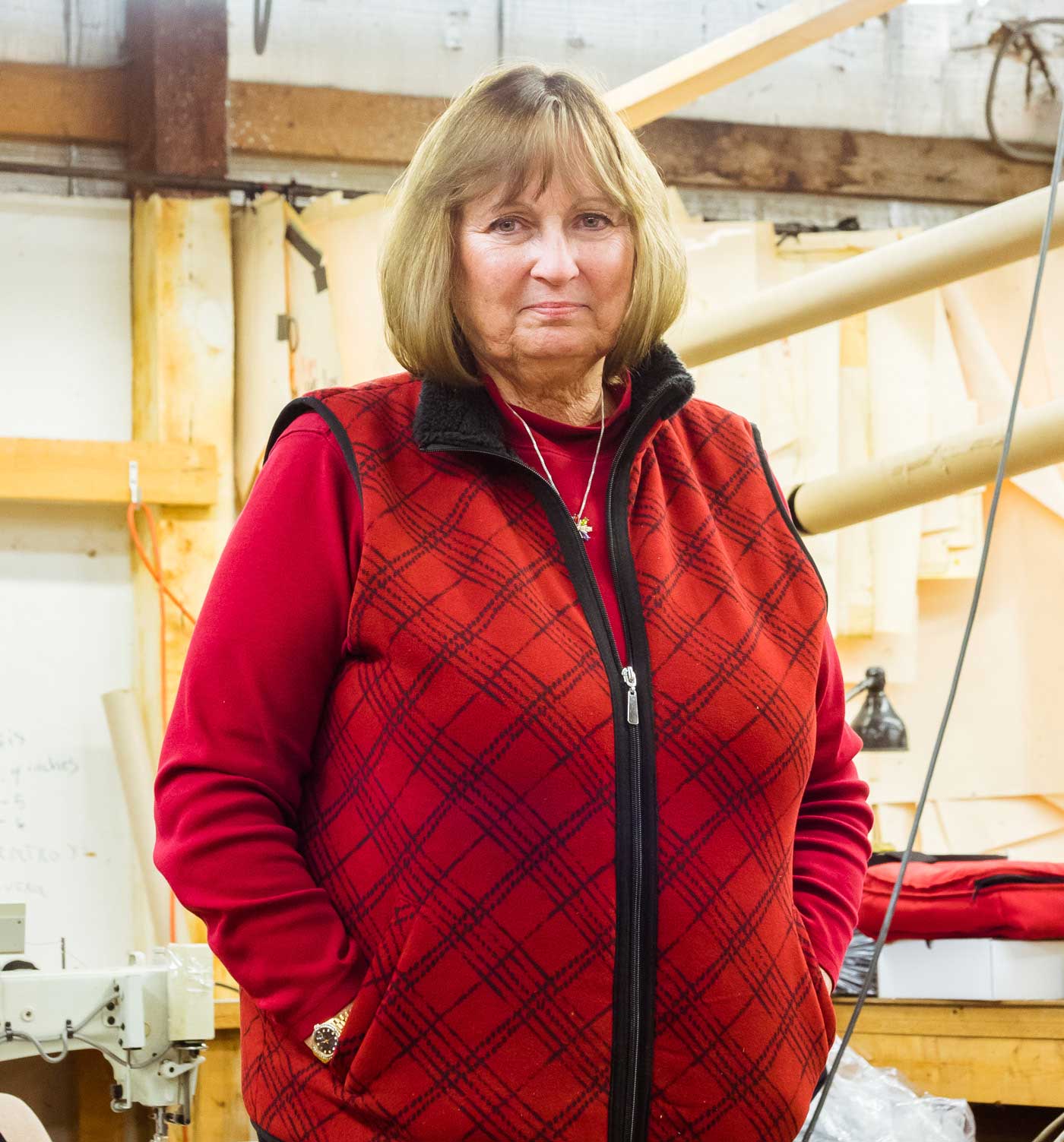
“I’ve made all the mistakes, but somehow we’ve survived them. I don’t know how exactly, but I think it’s just sheer willpower,” says Kosar. “Bill [her late business partner] and I used to say — and this is something terrible to say, but we used to say we’re too stupid to quit. We just can’t. But it’s never been an easy thing because when somebody buys something and they don’t buy it for another four or five years, it’s easy to get disheartened or to have a very difficult cash flow….You get a big order and then you’re like, ‘Okay, where’s the next one?’ And you just have to keep really beating the bushes.”
I’ve made all the mistakes, but somehow we’ve survived them. I don’t know how exactly, but I think it’s just sheer willpower.
Kosar’s signature bags, which are sewn in the company’s workshop by a husband and wife team, sandwich a layer of food-safe polyester insulation between 1,000-denier Cordura nylon on the outside and a slightly thinner nylon interior lining. She has added other features over the years, like a see-through pocket on the outside to hold a restaurant ticket, a reflective safety strip, and an underside wrist strap that allows the delivery person to hold the bag like a tray. The bags are built to withstand several years of spills, leaks, and getting bounced around in cars.
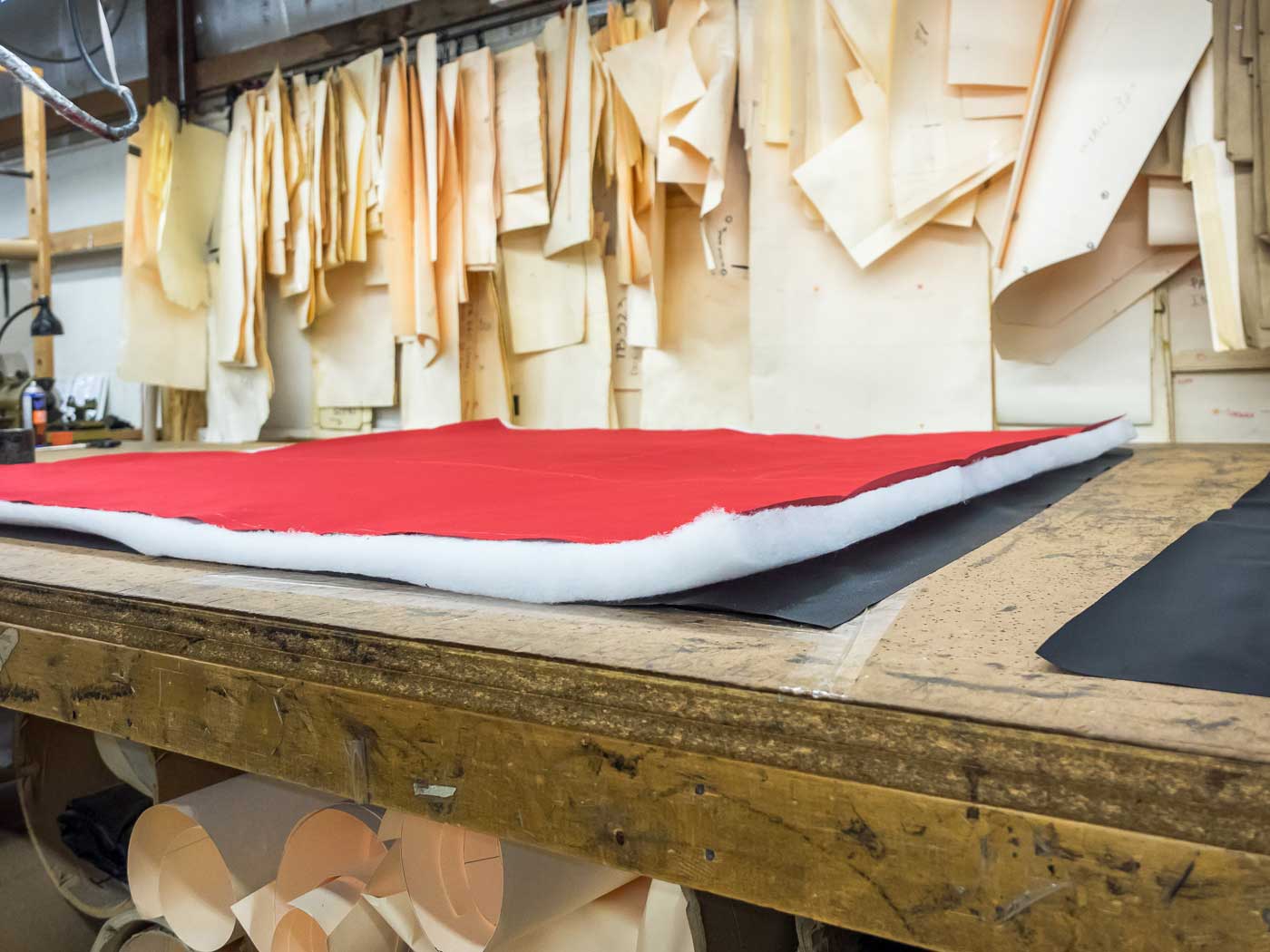
“She was domestic and her bags were always 25 percent higher than anywhere else, but she was quality,” says “Big Dave” Ostrander, a pizza industry consultant who owned a pizzeria in Oscoda, Mich. for 25 years. “She was like Craftsman tools… guaranteed but expensive. We’d buy one or two Ingrid bags and we’d buy six or seven cheapies for the price of three of hers.”
The expiration of Kosar’s three patents in the early 2000s eased the way for lower-priced products and Chinese imports. Recognizing that price-conscious restaurants didn’t want to spend top dollar on bags that get left behind on porches or repurposed as beer caddies by drivers, Kosar started importing Chinese-made products about 15 years ago. They’re sold alongside her own bags at a substantially lower price. An imported sleeve that can fit two 16-inch pizzas starts at $16.99, while one with the same capacity from Kosar’s shop is $58.99.
She was like Craftsman tools… guaranteed but expensive.
Some of Kosar’s most loyal customers are happy to pay the premium. Bob Beyer, the general manager of RiverView Restaurant & Tavern in Algonquin, Ill., discovered Thermal Bags by Ingrid at a pizza trade show and estimates that he’s used Kosar’s bags for all but two of his restaurant’s 25 years. In his experience, cheaper fabrics crack in cold weather and don’t retain heat.
“We run eight to 12 drivers on a Friday or Saturday night, and sometimes they leave them on top of the car and go around the block,” says Beyer, whose restaurant delivers 500 to 600 pizzas a week in addition to steak, ribs, chicken and other items. “They find them! You have to clean them off, but they’re still good.”
Bags to Boxes to Boxes and Bags
Growing up in the Chicago suburb of Des Plaines, Kosar looked up to her parents, who were both small business owners. Her father was a certified public accountant who ran his own firm before passing away when she was young; her mother kept the building and turned it into a beauty salon. Kosar’s own entrepreneurial journey started at a craft fair in the early 1980s, when she spotted a “little bag made out of cotton with some padding and stuff for a lunch bag.” At that time, she was a buyer for a company that made steel equipment like shafts for oil rigs, and she had no experience with the pizza or restaurant industry, other than as a consumer.
“I just thought, well, I hate getting it cold,” Kosar recalls. “I don’t know, I was at that age when I ate a lot of pizza.”
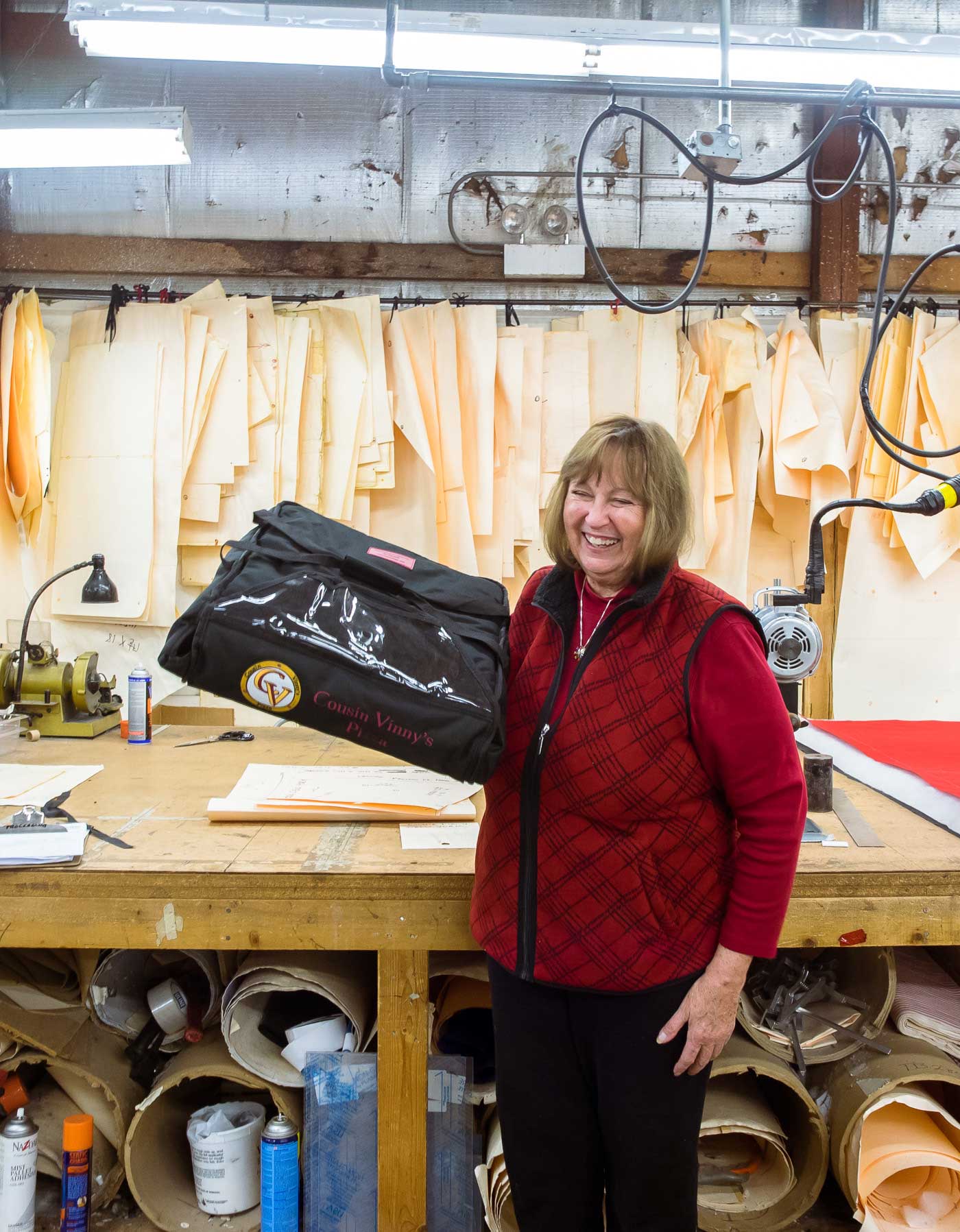
At the time, pizzerias were relying on corrugated cardboard boxes to keep their delivery pies warm. Those boxes were already an improvement over the industry’s earliest mode of transport, which was a cardboard cake circle slid into a paper bag. Restaurants later adopted paperboard bakery boxes, but these containers were designed to hold room-temperature pastries rather than steaming hot pizzas, and they couldn’t be stacked without collapsing.
Domino’s Pizza, which was founded in Michigan in 1960 and last year commanded a 24 percent share of the U.S. pizza delivery market, is credited for standardizing the modern pizza box. The new cartons, while sturdier and stackable, still weren’t great at keeping pizzas hot and crispy during deliveries.
“Pizza is bread, but it’s also moist things like tomatoes and toppings and cheese,” says Scott Wiener, a pizza box collector who authored the book “Viva La Pizza! The Art of the Pizza Box” and leads pizza tours in New York City. “You have this issue of extra moisture falling onto crust, which is usually pretty crunchy, but it will soften the crust. And that’s the big issue that happens with boxes….Since it’s made of paper, there’s only so much heat you can trap.”
Pizzerias tried boosting heat retention in a variety of ways, including wrapping the boxes in blankets. Ostrander, who delivered pizzas as a high school student, remembers using a metal heater box the size of a mini refrigerator that was outfitted with shelves and a lit can of Sterno, and placed somewhat precariously in the back seat.
“You’ve got an open flame, yeah,” Ostrander says. “We were told, ‘If you hit the brakes real hard, it could get really ugly. If you hit a telephone pole, bail.’ That was about the extent of our training.”
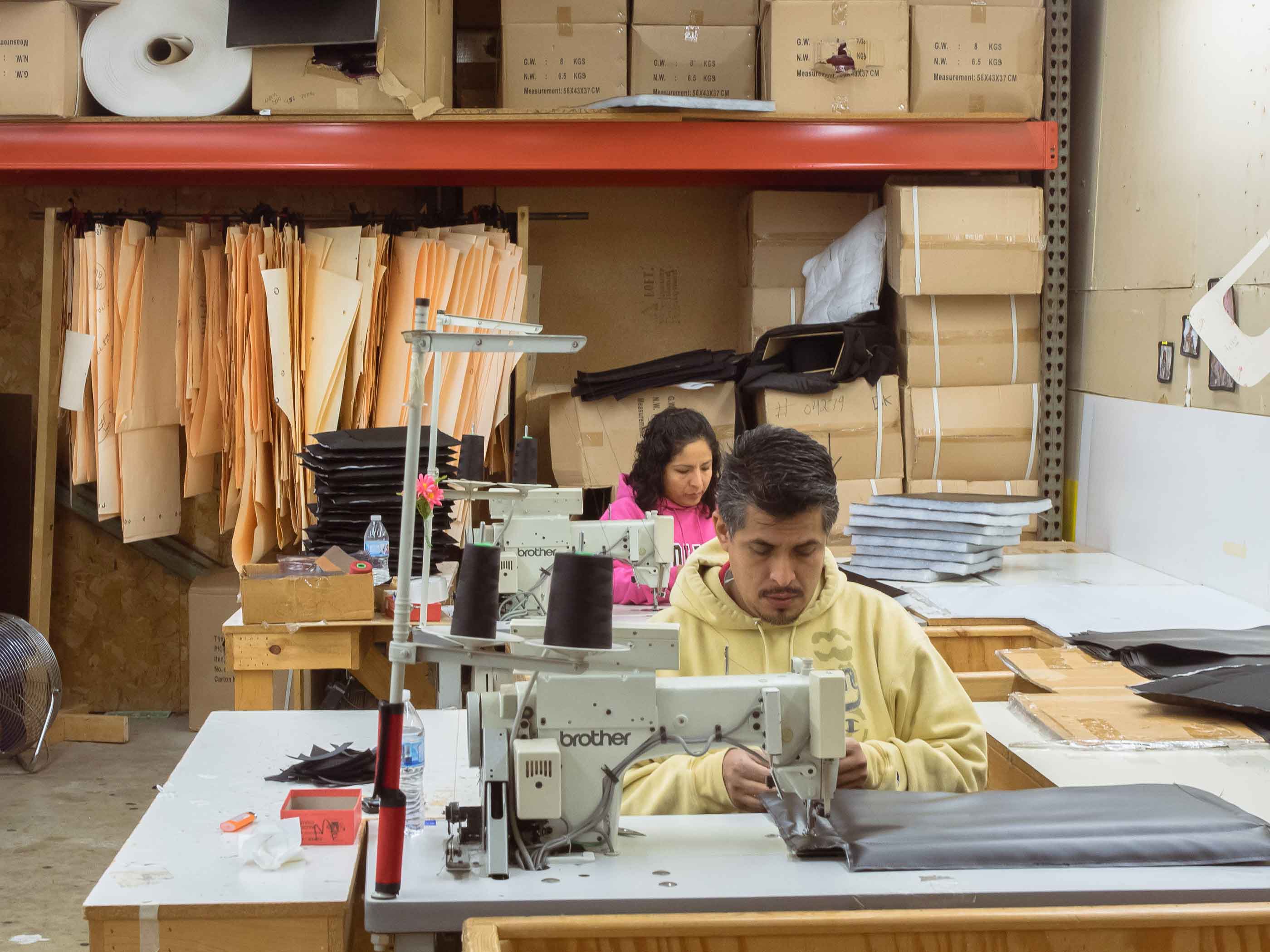
Kosar, inspired by the padded cotton lunch bag, started experimenting with designs and industrial fabrics that could accommodate a pizza box. As her idea took shape, she realized she needed capital because she had just spent her savings on a car. She called Bill Seliskar, a friend she knew from her old job, when she used to buy boxes from his corrugated cardboard company. Seliskar also made cardboard circles and boxes for the pizza industry.
“He said, ‘I’ll be your partner when you meet the standards that Domino’s has for heat retention,” Kosar says. “And when I did, I was so excited, and we became partners and that’s how it started. We were partners for seven years.”
Pizzas typically come out of the oven at 180 to 200 degrees. The Domino’s benchmark was maintaining a temperature of at least 140 degrees for 45 minutes. Kosar visited restaurants with a small probe that was connected to a meter with a cord. When a pizza came out of the oven, she stuck the probe in the box and took temperature readings for the next hour. Kosar ate a lot of pizza (her favorite kind is mushroom and pepperoni), and when she got tired of it, she bought pies for her neighbors and continued the tests.
Kosar developed a bag that limited the heat loss to an average of five degrees an hour. The result is an insulated carrier that works in tandem with the cardboard carton. The box retains some heat but can have more holes for venting steam, while the bag’s breathable nylon keeps everything warm and allows steam to escape so the crust stays crispy.
“If we cheapen the materials, there’s no way you can make it so the steam releases right through,” Kosar says. “The steam would release right through nylon, but if you have a PVC or a vinyl backing on any of those materials.…I think of it like a little terrarium. It keeps all the moisture in there.”
The design that launched Thermal Bags by Ingrid in 1983 is so ubiquitous now that it seems inevitable. But she had a long list of considerations: The bag should be big enough to hold multiple cartons, yet light and flexible enough for the delivery person to handle without difficulty. It should have enough thermal insulation to keep its contents warm and stand up well to leaking food.
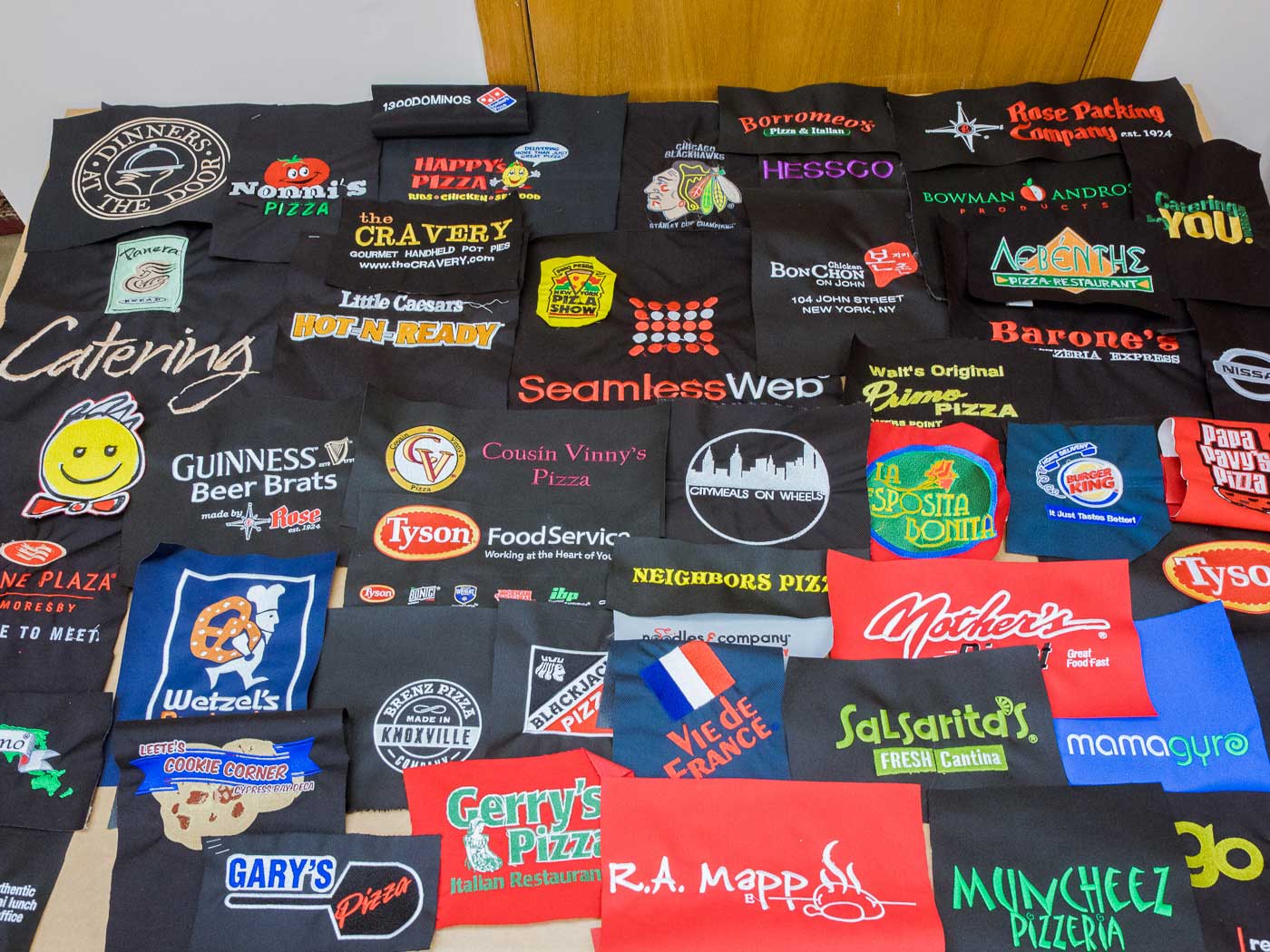
Kosar had to explain these features to skeptical restaurant owners in the early days. She and Seliskar, who became the company’s main salesperson, began putting out mailings to local pizzerias, advertising in trade magazines and visiting industry conventions. In 1984, after repeated calls to Domino’s, they got a $10,000 order from the chain.
“Oh, you basically levitate, especially when you’re so new and you’re so excited and you finally get an order,” Kosar says of making that sale. “It’s unbelievable. It’s like being on ‘America’s Got Talent.’”
Highs, Lows and Looking Ahead
More victories followed in the early years. Thermal Bags by Ingrid signed up other big chains like Papa John’s Pizza and won government contracts to supply restaurants on U.S. Army and Air Force bases with pizza bags. In the late 1990s, Domino’s asked Kosar’s company to help develop a bag that could hold a removable heating element, which could be plugged in and heated up in the store before deliveries. The HeatWave bag was introduced in 1998 and Domino’s ordered 90,000 of the bags from Kosar, representing nearly half of a typical year of sales for her business.
The Heat Wave project remains Thermal Bags by Ingrid’s largest single order to date. The following years brought challenges: Domino’s moved on to other suppliers, and Kosar made an unsuccessful foray into personalized promotional products in 2005. The recession prompted the small, independent pizzerias that made up her core customer base to put off replacing their current bags, hurting sales. In 2009, Seliskar died at the age of 66. He and Kosar had remained friends after he left the business to start a cat toy company in Arkansas with his wife, and she considered him a mentor.
“I always felt if I had a problem, I could go to him for it and talk to him,” Kosar says. “And without him being around, it’s been different. I’ve felt more on my own and I didn’t have a safety net anymore because I always felt he was my safety net. But you just have to get used to that and get over it.”
In February 2010, Kosar filed for personal bankruptcy, which she attributed to bad real estate investments she and her ex-husband made. One of her creditors filed a lien against the Thermal Bags by Ingrid building, which she owns. Rather than give up the property, Kosar reaffirmed the debt and agreed to pay it.
“I had to do that to protect the business,” she says. The bankruptcy was discharged in May 2010 and more than four years later, she’s in better financial shape than she expected. She was able to buy a new house in a large senior community that she calls “the best place I’ve ever lived.” And at her company, the small group of longtime employees she manages now feels like family. Kosar and Mary DeNicolo, a 13-year employee who heads sales, joke that they’re sisters.
“I came over and talked to Ingrid, and I knew it was a good match,” DeNicolo says of her job interview. “It was small and family-oriented. … I didn’t think I’d find a company like that. I told her I was so happy I found her.”
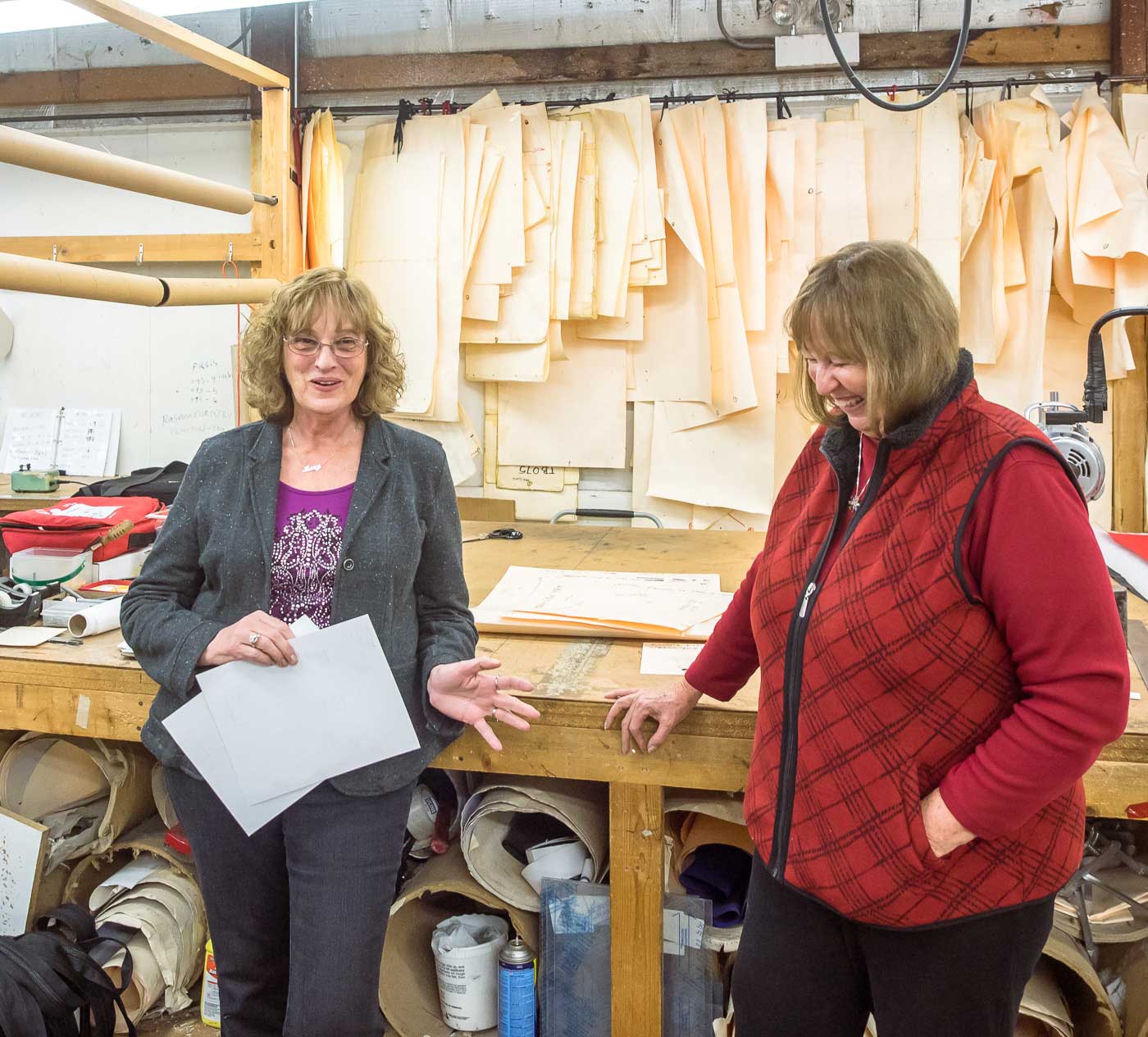
The shelves in DeNicolo’s cubicle are lined with prototypes and products from the company’s history, like an insulated carrier for umbilical cord blood that was a custom order from a European stem cell bank. Kosar likes to take on special requests. If someone out there needs an insulated bag, Thermal Bags by Ingrid can probably make it.
The company’s current focus is a line of covers for the commercial bun racks that restaurants and bakeries use to hold sheet pans. Like the pizza bags, the bun rack covers are made from heavy-duty, insulated nylon to maximize heat retention. The new product line also includes a vinyl proofing cover that shields rising dough from variations in temperature and humidity. Panera Bread is one of the biggest customers for the bun rack covers and Kosar, encouraged by the restaurant chain’s demand, began promoting the products more in the last few months.
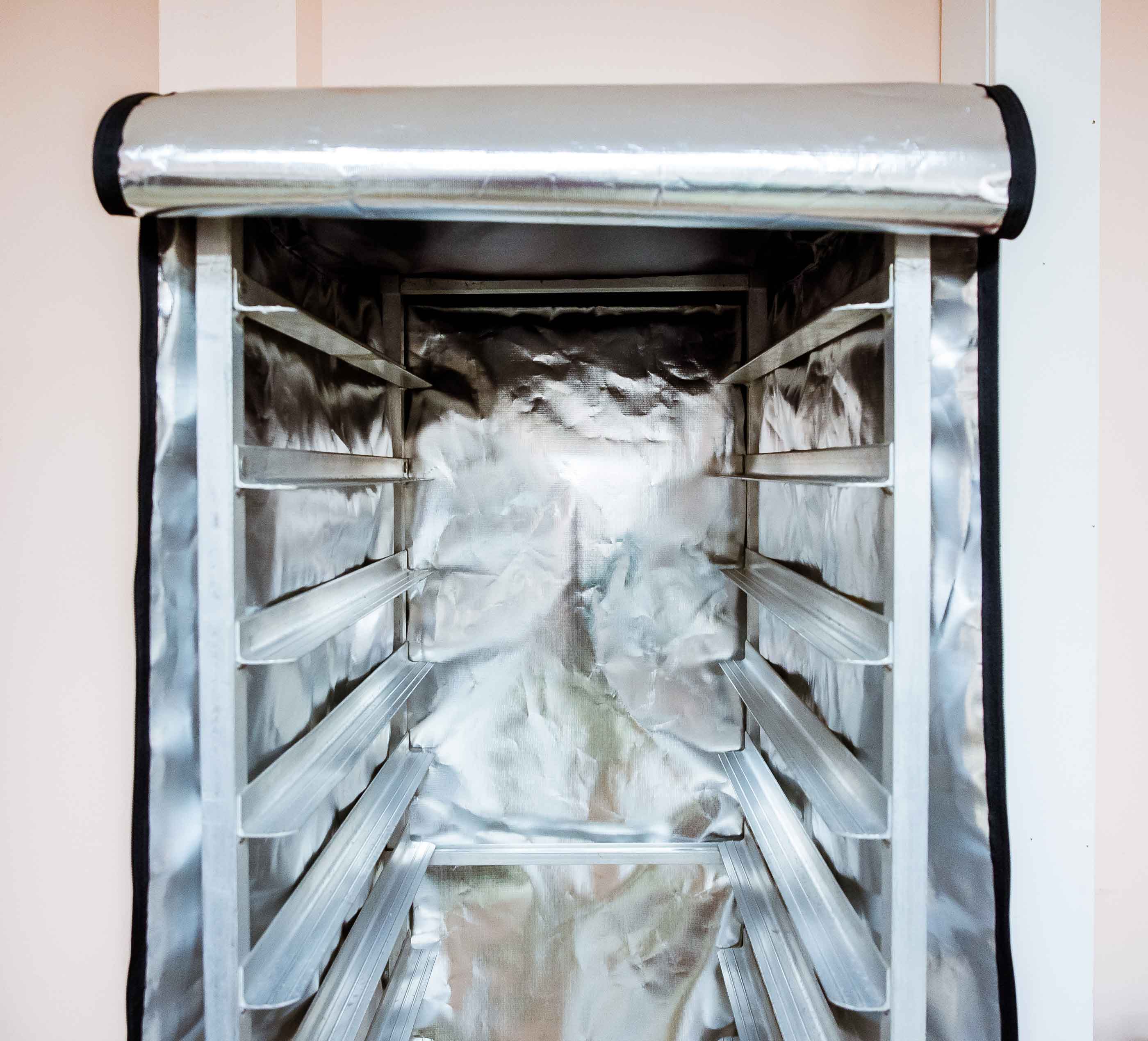
“If you’ve got a (pizza) bag that works, it’s going to last you for years, so how many more are you going to need?” she says. “Now that there’s so many people in the pizza bag industry, it’s kind of diluting the whole market. That’s why we’re going off in a different direction with the bun rack covers.”
Some of her pizza bag customers are returning, and Kosar believes one client in particular is close to committing to large, regular orders that could keep her company busy year-round and allow her to staff up again. If sales recover, she’ll feel more comfortable about retiring and leaving her business in the hands of a successor.
“I’ve got to get it going, build it up a little more and then sell it,” Kosar says. “But I hope somebody takes it and does well. After 30 years, you have such a customer base. If you have the right people following up on that, it could really be big.”

